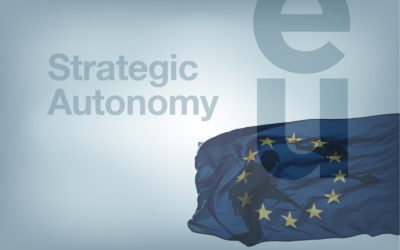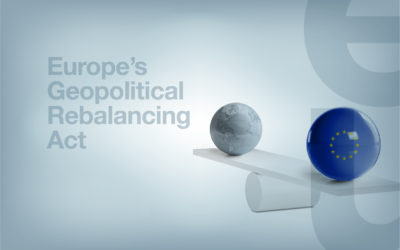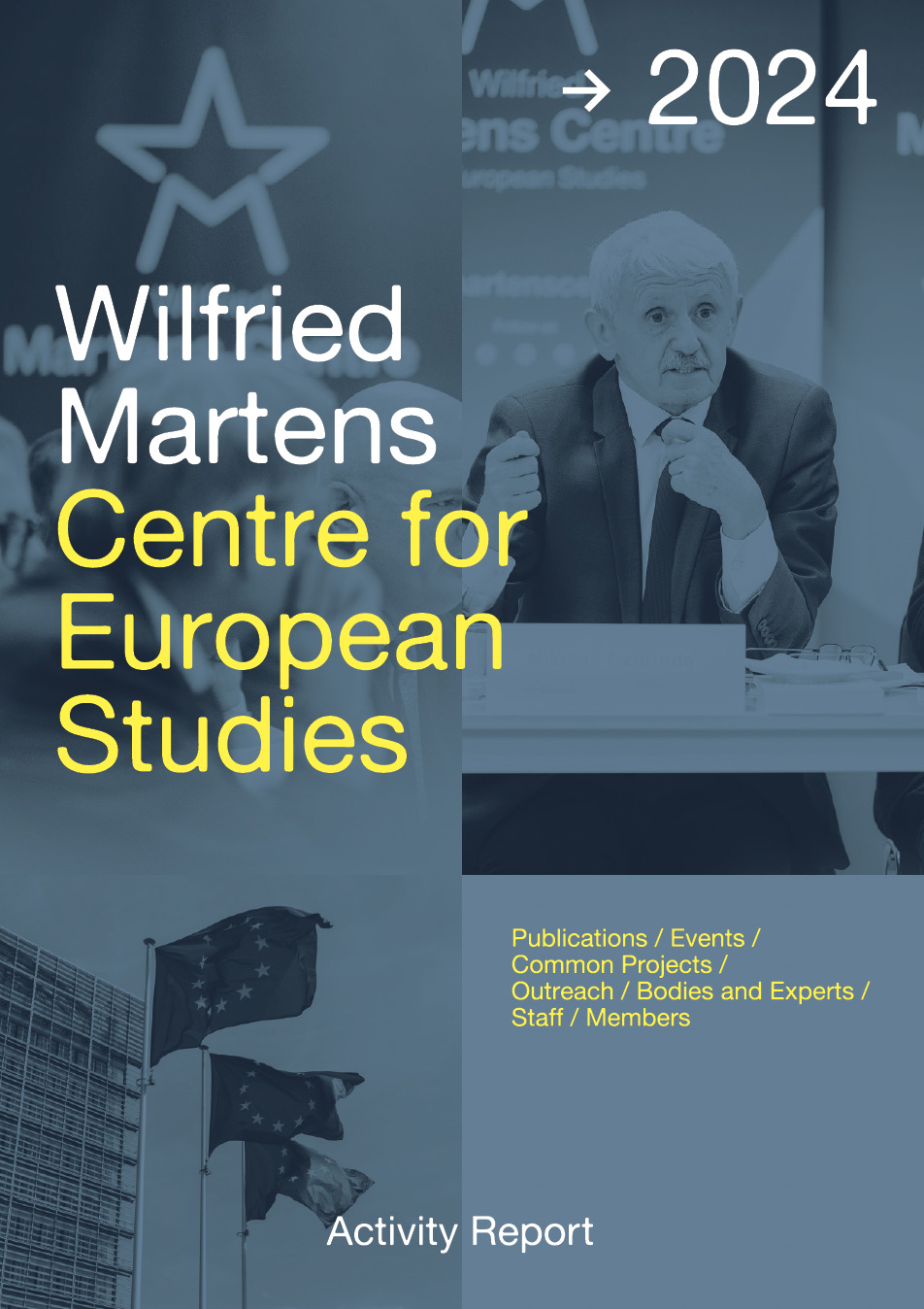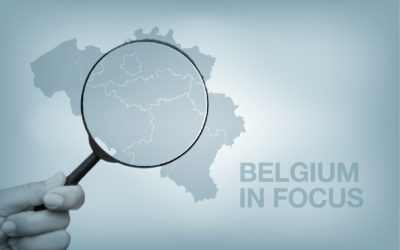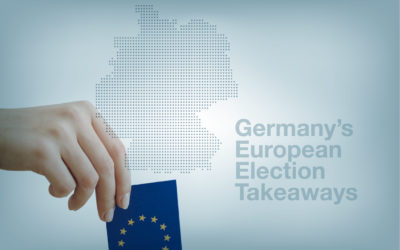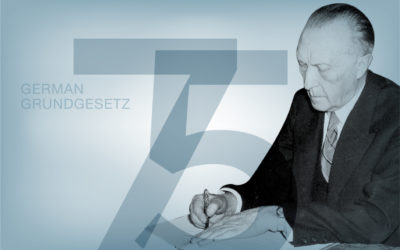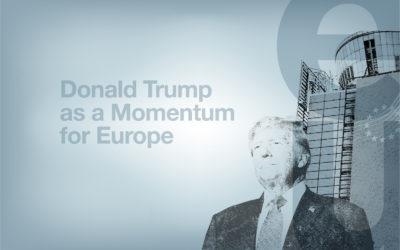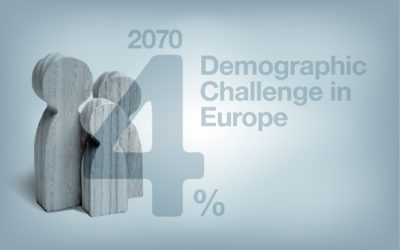John Bruton. An Appreciation.
08 February 2024
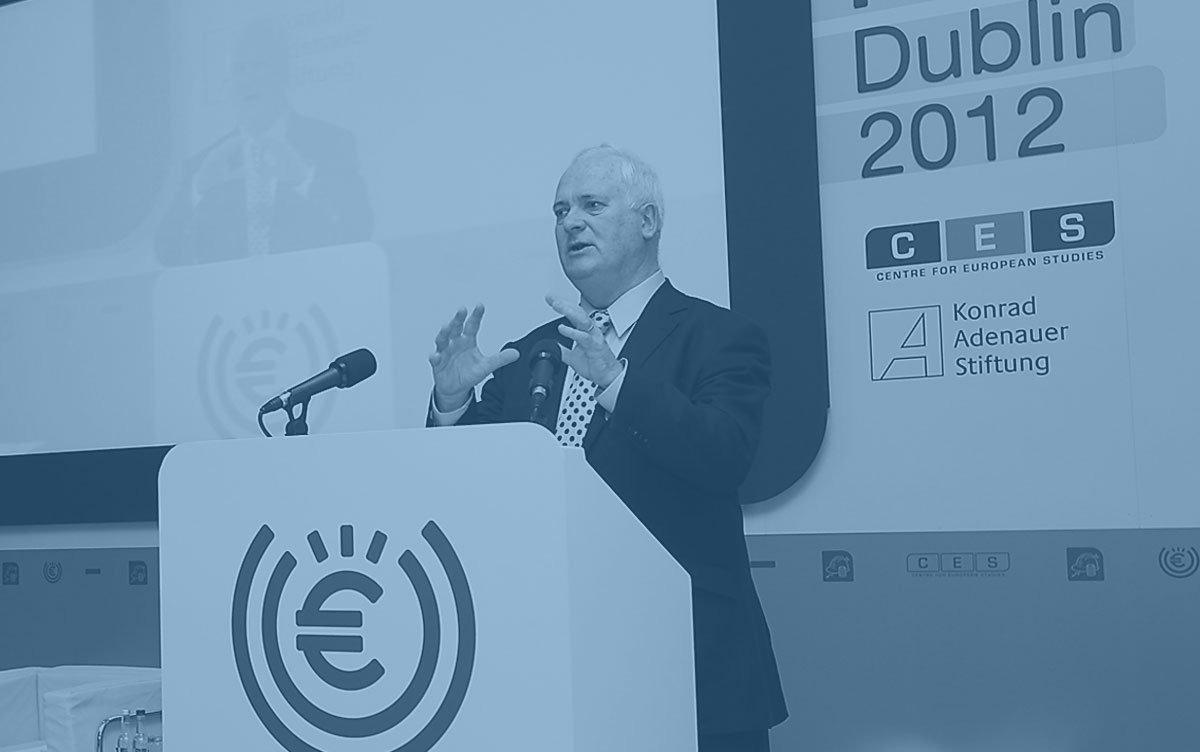
I didn’t get to know John Bruton personally until March 22nd 2016. On that day, terrorist attacks on Maelbeek metro station and Brussels Airport brought the city to a panicked standstill. Unruffled, John – who was over to speak at one of our events – and I shared a car to Amsterdam to get the last flight back to Dublin.
Over several hours of flight delays and a couple of drinks – amidst all the confusion and worry – John displayed the calm and balanced demeanour which characterised his long political career in Dublin and Washington.
Entering the Dáil (Irish Parliament) in 1969 – aged only 22 – he served as an Irish parliamentarian for over thirty-five years. His political legacy in Ireland – Taoiseach (Prime Minister) from 1994 to 1997 and multiple other cabinet positions during the 1980s – are testament to his often overlooked political skills.
His expertise in stitching together Ireland’s first “Rainbow” coalition in 1994 and their shrewd management of a blossoming Irish economy set the basis for Dublin’s long period of economic growth in the years that followed. Fine Gael’s move to the opposition benches in 1997 was the result of electoral losses for their coalition partners. For Fine Gael, Bruton’s term as Taoiseach resulted in more votes and additional parliamentary representation; a level of support that Fine Gael did not regain until the 2011 general election.
John was also central to the Northern Irish peace process (which culminated in the signing of the Good Friday Agreement in 1998). His constructive engagement with Sinn Féin and the Irish Republican Army (IRA) came despite his (and Fine Gael’s) deep reservations regarding the role of violence and intimidation in the nationalist campaign for a united Ireland.
Outside of Ireland, John was committed to the process of European Integration. As EU Ambassador to the United States from 2004 to 2009, he worked tirelessly to rebuild Transatlantic trust in the midst of the US invasion of Iraq. Until very recently, he remained an avid and interested thinker on European affairs through his network of contacts in Brussels and his official roles here in the Martens Centre.
His interests extended well beyond Irish politics as his writings, book reviews and numerous articles can attest.
Yet, perhaps John’s biggest contribution to Irish political life was neither his economic management, his longevity or his work on peaceful reconciliation.
Rather, as a proud follower of the Irish Parliamentary Party (IPP) tradition of non-violence and engagement, John symbolised a complete break with the Republican mould of Irish Prime Ministers which dominated political leadership in Dublin for much of the twentieth century.
His hanging of the portrait of John Redmond in his office as Taoiseach highlighted his belief in a more constructive form of moderate nationalism. Redmond, as IPP leader and a member of the Westminster Parliament, had very nearly succeeded in bringing Ireland significant independence (Home Rule) by constitutional means in 1914. However, the onset of the Great War and subsequent events long overshadowed Redmond’s achievements in an independent, and more overtly republican, Ireland.
John received much criticism in Ireland in the 1990s for his self-professed attachment to the older IPP legacies. Yet, as events in the proceeding decades have shown, John’s bravery in taking on the brickbats of being a “Redmonite” or a “West Brit” were essential in opening up the political discourse in Ireland.
It also facilitated a wider discussion of “Irishness” – a debate which until then was simplistically based on “Republicans” and “Everyone else”. By placing his pride in the parliamentary nationalist tradition centre stage, John opened the doors to a more inclusive debate about Ireland’s future.
This is a debate which is now more relevant than ever in the aftermath of Brexit, the changing dynamics of Northern Ireland and the possibility of a shared island becoming a reality in the decades ahead.
Back in Schipol Airport in 2016, I could not resist asking John about the infamous fall of the Fine Gael-led coalition government in 1982. As Minister of Finance, John’s decision – in the midst of a budgetary crisis – to impose extra taxes on children’s clothes and shoes was widely believed to have caused the government to collapse. Although it subsequently emerged that this plan was driven by senior civil servants in the Department of Finance against Bruton’s initial opinions – John was sanguine about the need for elected politicians to take responsibilities for their ultimate actions and to protect the integrity of the civil servant/political relationship.
It is a level of accountability and honesty that many current politicians would do well to learn.
Ar dheis Dé go raibh a anam dílis. May he rest in peace.
ENJOYING THIS CONTENT?



